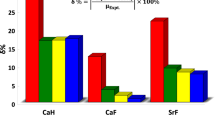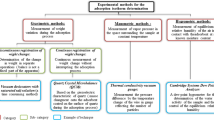Abstract
The Debye-Hückel description of electrolytes is based partly on the unrealistic specification that a single radius can be used in the representation of cation-cation, anion-anion, and cation-anion interactions. In this paper it is shown how physically realistic assignment of ionic radii leads to a more satisfactory equation for the activity coefficient.
Similar content being viewed by others
References
R. A. Robinson and R. H. Stokes,Electrolyte Solutions (Butterworths, London, 1965), Chapters 4 and 9.
J. N. Brönsted,J. Am. Chem. Soc. 44, 877, 938 (1922).
Author information
Authors and Affiliations
Rights and permissions
About this article
Cite this article
Spitzer, J.J. Ionic radii and the distance of closest approach in the Debye-Hückel theory of electrolytes. J Solution Chem 7, 669–673 (1978). https://doi.org/10.1007/BF00652017
Received:
Issue Date:
DOI: https://doi.org/10.1007/BF00652017




